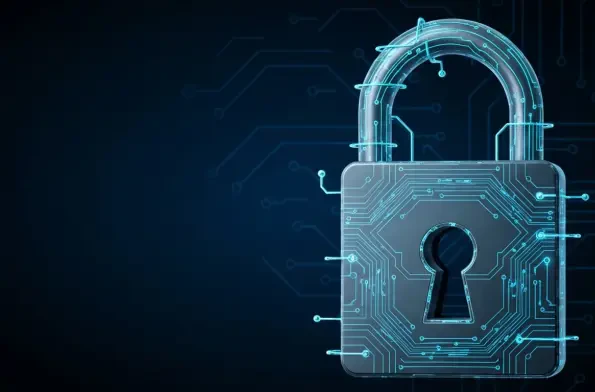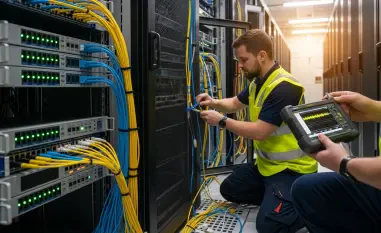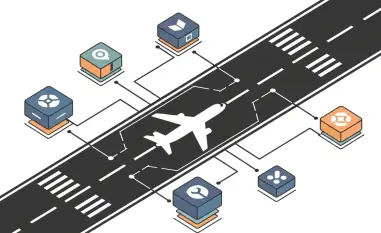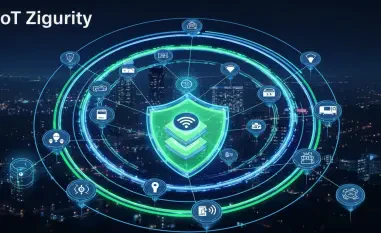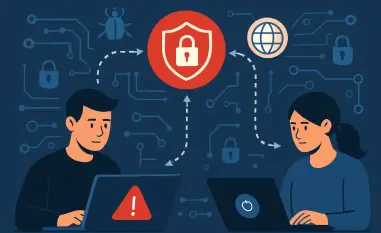Setting the Stage for a Cybersecurity Revolution
In an era where digital interconnectedness defines global trade, a staggering statistic emerges: over 80% of organizations in critical sectors have experienced a supply chain cyberattack in the past year alone, highlighting the urgent need for stronger defenses. This alarming reality underscores the vulnerability of supply chains, often the weakest link in an organization’s cybersecurity armor. As threats grow in sophistication, the European Union’s revised Network and Information Systems Directive 2 (NIS 2) steps into the spotlight, aiming to fortify defenses across medium to large enterprises. Alongside the UK’s Cybersecurity and Resilience Bill, this regulatory framework is reshaping how industries approach security, turning a pressing challenge into a potential strategic asset. This report delves into the transformative power of NIS 2, exploring its implications for supply chain resilience in key sectors.
The urgency to address supply chain vulnerabilities has never been greater. With critical industries such as energy, healthcare, and transportation increasingly reliant on complex, multi-tier networks, a single breach can trigger cascading disruptions. NIS 2 arrives as a catalyst for change, pushing organizations to rethink risk management at a fundamental level. By extending its reach to third-party suppliers and subcontractors, the directive compels businesses to prioritize cybersecurity not just within their walls but across their entire ecosystem. This shift sets the stage for a deeper examination of how compliance can evolve into a competitive edge.
Understanding the Cybersecurity Landscape and NIS 2’s Role in Supply Chains
The cybersecurity landscape today is marked by escalating threats that target the intricate web of supply chains supporting critical sectors. Digital ecosystems have become battlegrounds where attackers exploit dependencies, often through smaller, less-secured vendors, to infiltrate larger organizations. The rise of ransomware and state-sponsored attacks has amplified the stakes, making supply chain security a linchpin for operational continuity in industries like manufacturing and infrastructure. Protecting these networks is no longer optional but a cornerstone of national and economic stability.
NIS 2, alongside the UK’s Cybersecurity and Resilience Bill, introduces a robust framework to address these vulnerabilities. Targeting medium to large organizations in essential and important sectors, the directive expands its scope beyond traditional boundaries to include a wide array of entities and their third-party suppliers. This broadened focus ensures that even subcontractors and digital service providers fall under stricter oversight, compelling industries to adopt comprehensive security measures. The impact is profound, as compliance now requires a holistic view of risk across interconnected networks.
The significance of these regulations lies in their ability to standardize cybersecurity practices across borders. By enforcing accountability at every level of the supply chain, NIS 2 aims to mitigate the domino effect of breaches that can paralyze entire sectors. For businesses, this means not only safeguarding operations but also aligning with a regulatory mandate that influences market trust and partnerships. As such, understanding the directive’s role is the first step toward leveraging it for strategic growth.
Key Trends and Opportunities in Supply Chain Security Under NIS 2
Emerging Trends in Cybersecurity and Supply Chain Management
A defining trend in supply chain security is the growing interconnectedness of digital ecosystems, which, while fostering efficiency, also heightens exposure to cyber risks. As organizations integrate technologies like cloud computing and IoT devices, the attack surface expands, creating multiple entry points for malicious actors. This interconnectedness often leads to cascading disruptions, where a breach at a minor supplier can ripple through to major players, underscoring the need for end-to-end protection.
Another notable shift is the elevation of supply chain risk management to a board-level priority. No longer confined to IT departments, cybersecurity now commands attention from senior leadership as a critical component of business strategy. This change reflects an understanding that resilience against cyber threats directly impacts financial performance and stakeholder confidence. Boards are increasingly investing in proactive measures to anticipate and neutralize risks before they materialize.
Evolving technologies and practices are also shaping the landscape, offering tools to build stronger defenses. Artificial intelligence and blockchain, for instance, are being harnessed to enhance threat detection and ensure data integrity across supply chains. Coupled with a focus on real-time monitoring, these innovations enable organizations to respond swiftly to anomalies. Embracing such advancements is essential for staying ahead in an environment where threats evolve at a relentless pace.
Growth Potential and Strategic Advantages
Compliance with NIS 2 offers more than just regulatory adherence; it can drive significant operational efficiencies. By implementing standardized security protocols across supply chains, organizations can streamline processes, reduce redundancies, and minimize downtime caused by cyber incidents. This efficiency translates into cost savings and improved service delivery, positioning compliant firms as reliable partners in competitive markets.
Beyond operational gains, adherence to the directive enhances reputation and builds trust with customers and stakeholders. Companies that demonstrate a commitment to robust cybersecurity are often viewed as leaders in their field, attracting business from risk-averse clients. Market leaders in sectors like energy and technology have already begun to showcase how proactive security measures can differentiate them, turning a regulatory requirement into a badge of credibility.
Looking ahead, the potential to transform compliance into a competitive strength is immense. Organizations that invest in advanced security frameworks and foster a culture of resilience can outpace competitors still grappling with baseline requirements. By embedding cybersecurity into their core strategy, such firms not only meet NIS 2 standards but also set new benchmarks for industry excellence, paving the way for sustained growth over the coming years.
Challenges in Implementing NIS 2 for Supply Chain Security
Achieving compliance with NIS 2 presents a complex set of challenges, primarily due to its expanded scope. The directive now encompasses a diverse range of entities, from direct suppliers to distant subcontractors, requiring organizations to map and monitor an intricate network of dependencies. This breadth complicates efforts to ensure uniform security standards, as smaller players may lack the resources or expertise to meet stringent demands.
Visibility over multi-tier supply chains remains a significant hurdle. Many companies struggle to identify critical dependencies beyond their immediate vendors, creating blind spots that attackers can exploit. Overcoming this obstacle necessitates investment in supply chain mapping tools and partnerships that prioritize transparency. Without clear insight into every layer, the risk of undetected vulnerabilities persists, undermining compliance efforts.
Cross-departmental collaboration is another barrier, as security, legal, and procurement teams must align to embed cybersecurity into supplier relationships. Transitioning to evidence-based supplier assurance adds further complexity, moving away from superficial assessments to rigorous validation of security practices. Addressing these challenges requires a coordinated approach, including training programs and the adoption of standardized evaluation criteria to ensure consistency and accountability across the board.
Navigating the Regulatory Framework of NIS 2
The detailed requirements of NIS 2 impose strict obligations on organizations to safeguard their supply chains. Incident notification timelines are particularly demanding, with initial warnings required within 24 hours and comprehensive reports due within 72 hours of a breach. These tight deadlines necessitate well-defined protocols and robust communication channels to ensure timely and accurate responses, leaving little room for error in crisis management.
A key emphasis of the directive is on contractual cybersecurity clauses with suppliers. Organizations must embed mandates for incident reporting, audit rights, and secure development practices into agreements, fostering accountability at every level. This contractual reinforcement is crucial for aligning third-party providers with the same high standards expected of primary operators, creating a unified front against cyber threats.
Compliance also hinges on robust oversight and alignment with updated frameworks like the UK’s NCSC Cyber Assessment Framework. This alignment pushes companies to adopt verifiable proof of supplier adherence to security protocols, moving beyond mere promises to tangible evidence. Establishing clear accountability measures and regular audits ensures that standards are not only met but maintained over time, reinforcing the integrity of supply chain ecosystems.
The Future of Supply Chain Security Under NIS 2
The long-term impact of NIS 2 on supply chain practices promises to be transformative, as organizations adapt to a heightened focus on cybersecurity. Emerging technologies such as machine learning and advanced analytics are poised to enhance security and visibility, enabling predictive risk management. These tools can identify potential threats before they materialize, offering a proactive shield against disruptions in increasingly complex networks.
Future disruptors, including evolving cyber threats and global regulatory trends, will continue to challenge the status quo. As attackers refine their tactics, organizations must remain agile, anticipating shifts in the threat landscape. Harmonization of regulations across regions could further complicate compliance, requiring businesses to stay informed and adaptable to maintain alignment with diverse standards.
Preparation for sustained resilience involves strategic investments in cybersecurity infrastructure. Companies that prioritize scalable solutions and continuous improvement will be best positioned to navigate uncertainties. By fostering a culture of innovation and vigilance, such organizations can turn the evolving demands of NIS 2 into opportunities for growth, ensuring they remain robust in the face of future challenges.
Reflecting on Insights and Looking Ahead
This exploration of NIS 2 and its impact on supply chain security reveals a landscape of both challenge and opportunity. The directive’s stringent requirements push organizations to confront vulnerabilities head-on, fostering a deeper commitment to resilience. Discussions around trends, compliance hurdles, and technological advancements highlight the multifaceted nature of building secure supply chains.
Looking back, the journey underscores the necessity of cross-departmental synergy and robust supplier partnerships. The shift to evidence-based assurance and rapid incident response emerges as pivotal in meeting regulatory demands. These efforts lay the groundwork for a more secure operational environment, even amidst persistent cyber risks.
Moving forward, senior leaders must focus on embedding cybersecurity into strategic planning, viewing it as a driver of value rather than a burden. Investing in cutting-edge tools and fostering adaptive systems will be critical next steps. By championing a proactive stance, businesses can harness the principles of NIS 2 to not only safeguard their networks but also secure a lasting competitive advantage in an ever-evolving digital arena.
